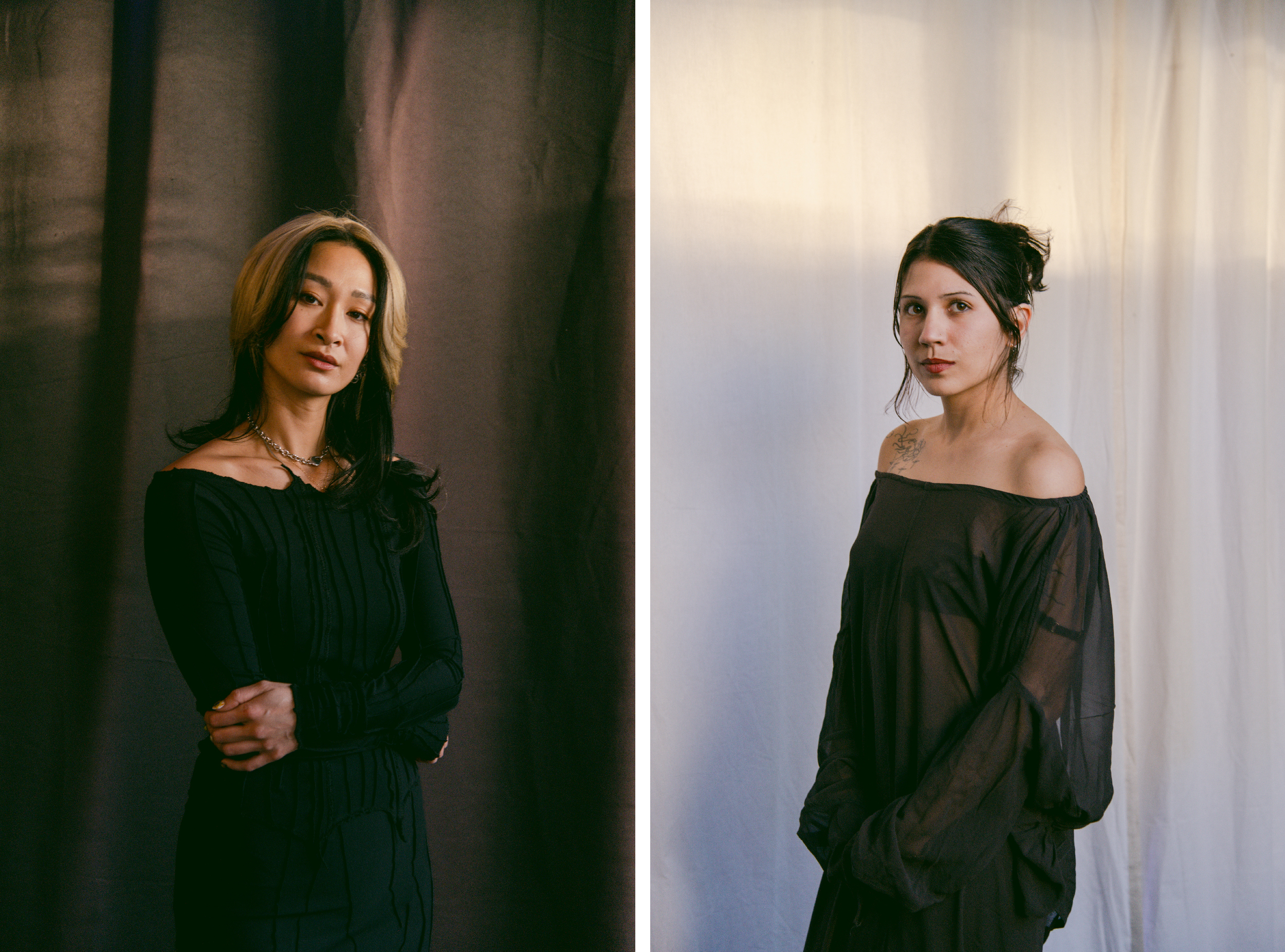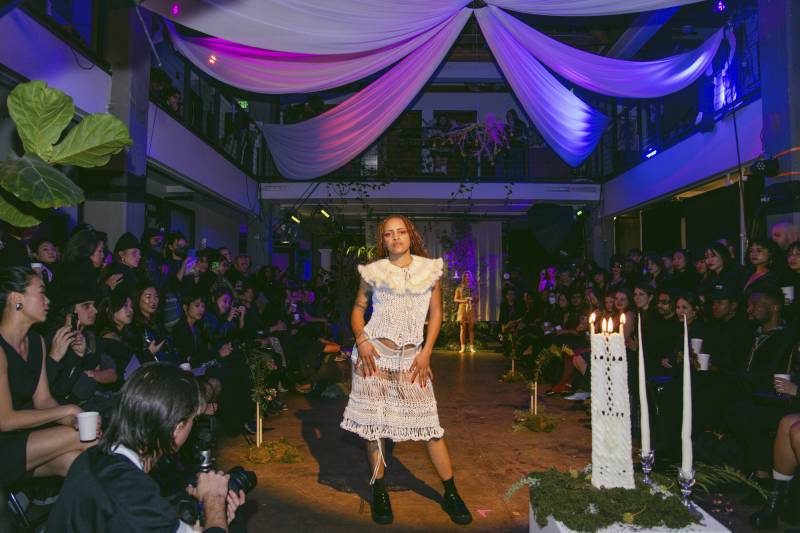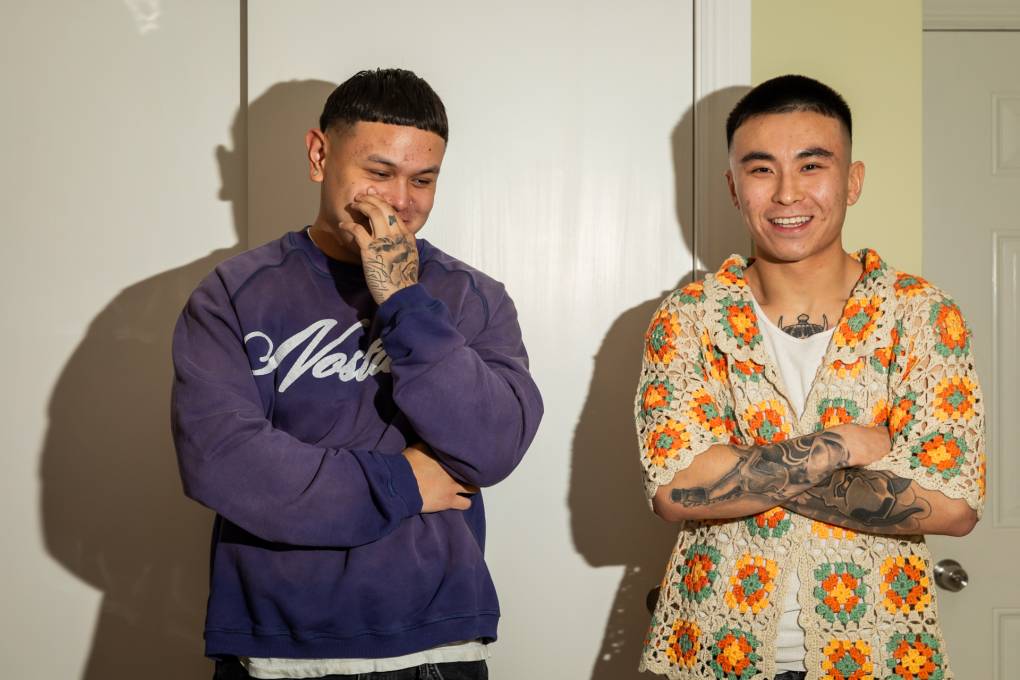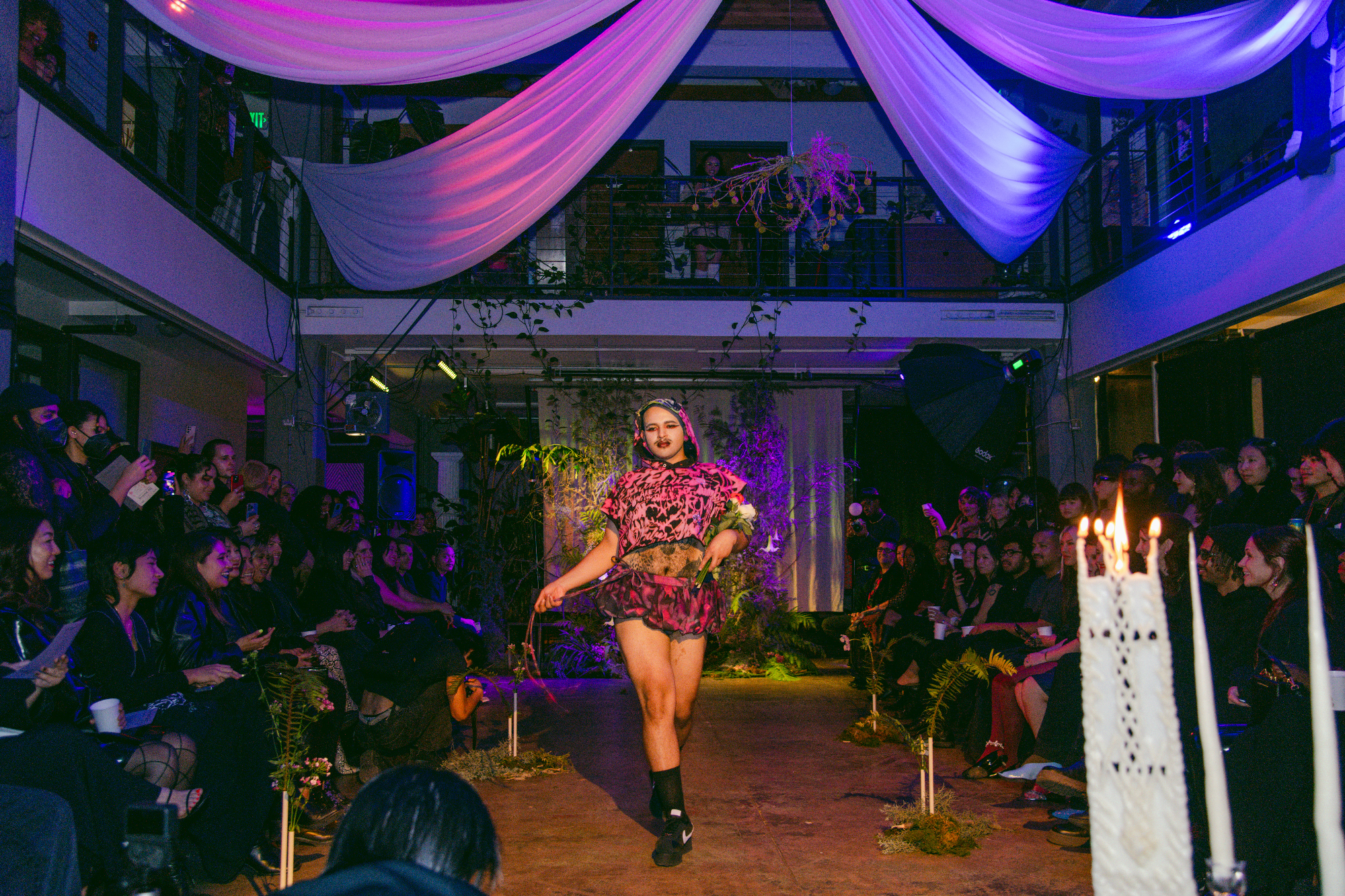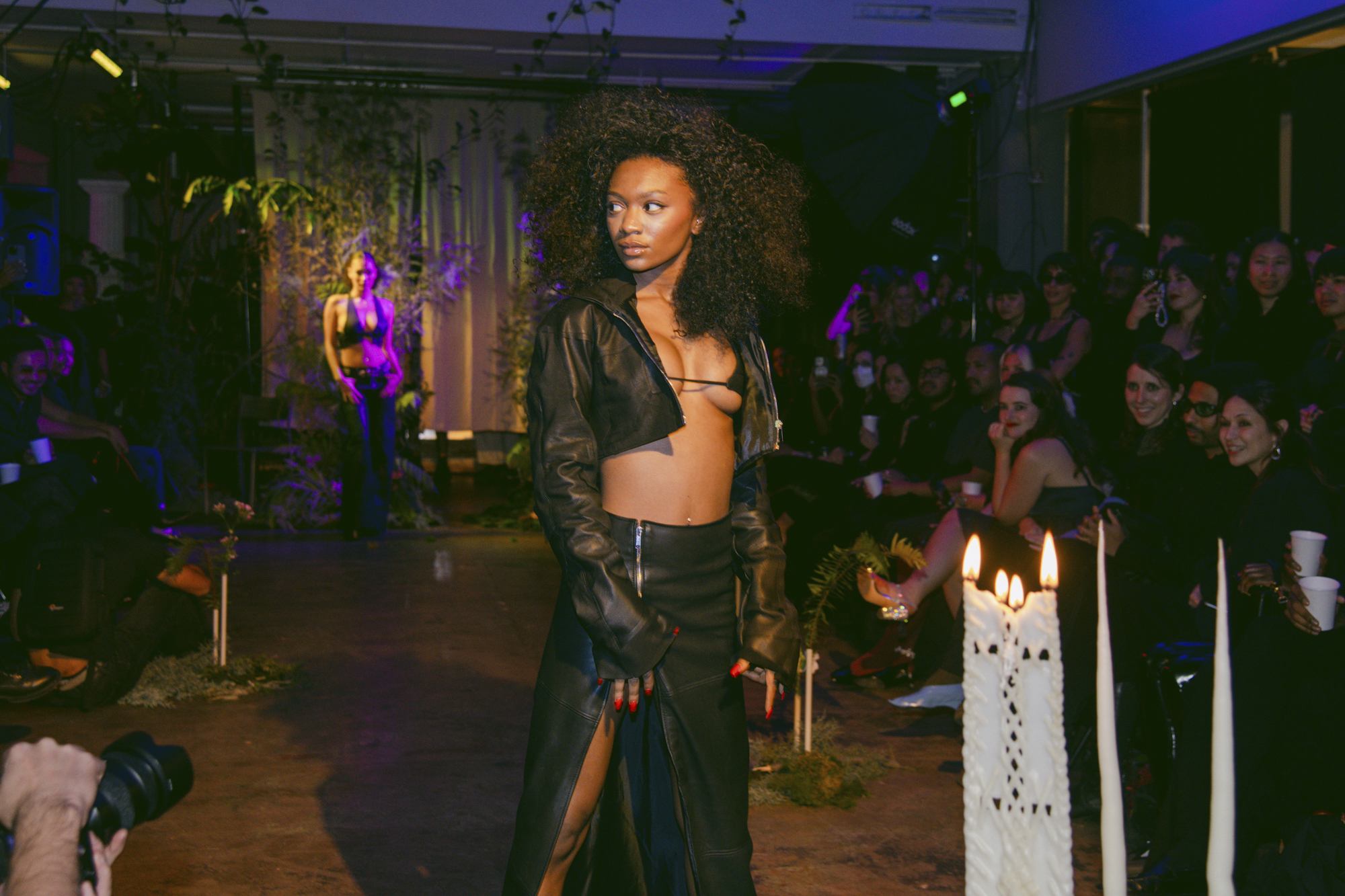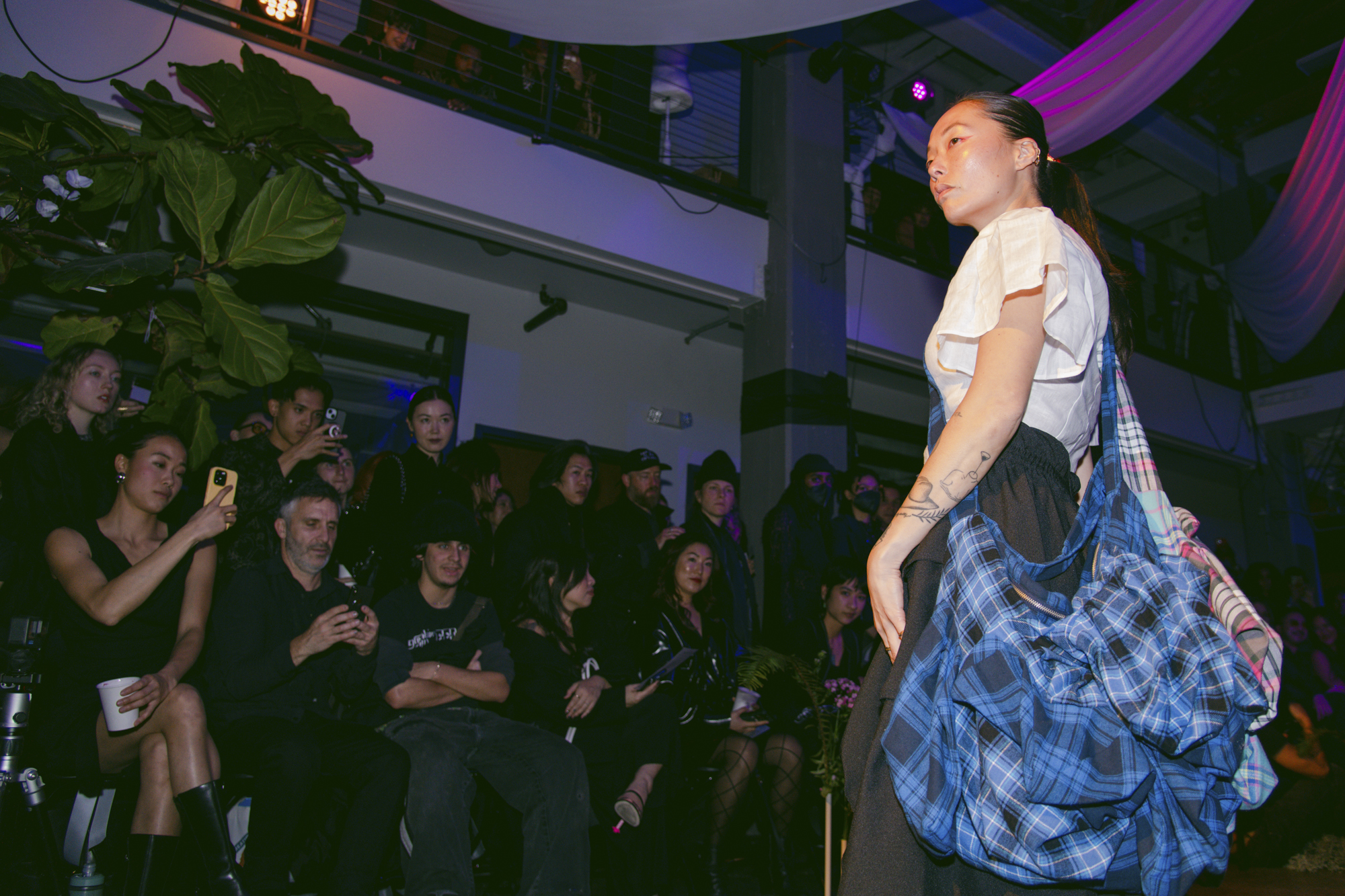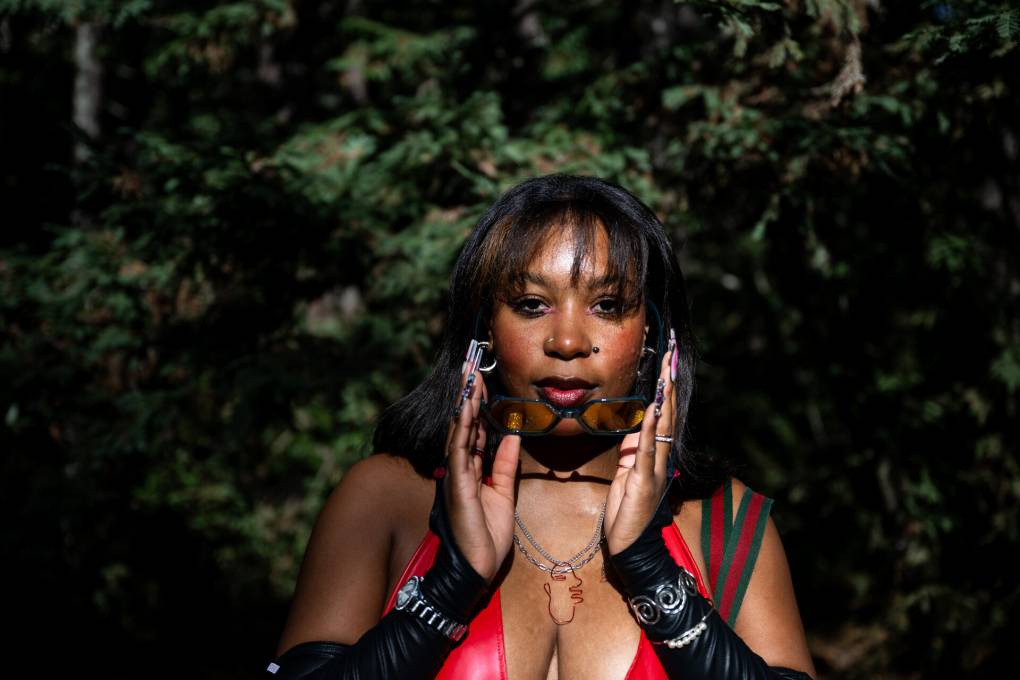Guests at the Dec. 16 event were instructed to wear all black. The assignment might have turned the lobby of Monument, a SoMa event space, into a funeral hall had there been less leather, or fewer pleats. Instead, the crowd resembled the queue for a Berlin nightclub.
The occasion: an experimental fashion show and clothing pop-up called The Wedding. Emerging designers flew in from Tokyo, Mexico City, Krakow and New York to join a slate of Bay Area brands in an exhibition freestyling on the marital theme. The night’s hosts — Oakland boutique Two Two and the California pop-up jane galerie — converted the Monument lobby into a runway, marking its borders with minimal floral arrangements that sprouted from the shiny concrete floor like sophisticated weeds.
